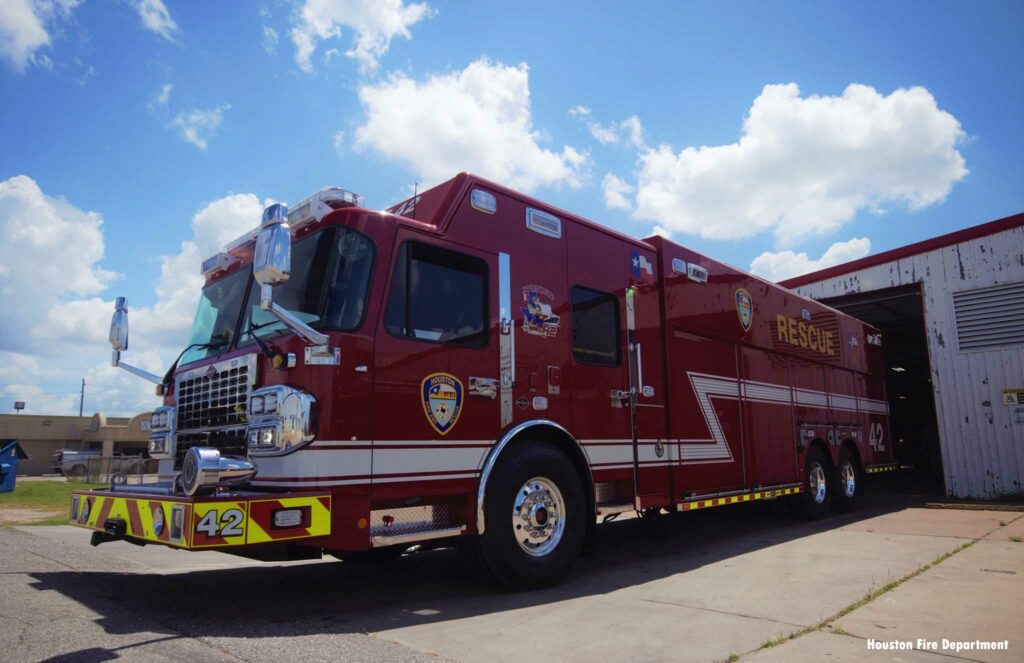
WHAT WE LEARNED ❘ By Ruy Lozano
Manufacturing shutdowns resulting from COVID-19 have significantly impacted the American fire service. The supply chain disruption has cause raw material scarcities that affect downstream suppliers of emergency equipment, resulting in increased lead times and back orders of required emergency service equipment.
I arrive at the office trying to enjoy my cup of coffee when my quartermaster calls, telling me that we are running low on fire helmets and that suppliers are unable to provide a timeline for delivery. My initial action is to tell my staff to go to a noncontract vendor and secure the product. This is a standard procurement option when your contract vendor can’t fill your orders in a timely manner. My quartermaster replies, “We tried! Every vendor is in the same predicament—nothing on the shelf and no timeline from manufacturers.”
Fire Service Logistics in a COVID World
I immediately notified the chief procurement officer and senior officer so he can anticipate purchases of opportunity. I reached out to our vendor for an explanation. This delay is not just an inconvenience; departments our size burn through 50 to 100 fire helmets a month for a variety of reasons (damage, expiration, tracking numbers no longer visible). If we are unable to replace them, regulatory agencies can sanction the department.
Suppliers, Vendors Affected
Later that day, I receive an official letter from my vendor explaining that there are global scarcities of the raw material used in fire helmets because of the COVID-19 shutdowns—in this case, raw material means the plastic resins used to manufacture fire helmet outer shells and internal components.
Plastic resins are used in all aspects of modern manufacturing; the pandemic caused production plants, logistic supply chains, and fabrication facilities to shut down or to operate at a fraction of their capacity. This forced raw material manufacturers to limit allocations downstream, significantly depressing product output. Not only does this place a drag on deliveries, but it dramatically increases prices.
“Just-In-Time” Limitations
“Just-in-time” or stockless production is a common method for eliminating waste and optimizing manufacturing capacity. In a perfect world, this results in positives on the balance sheet, but when business ecosystems are disrupted, product output is reduced. This is what happened in the plastic resin industry; there were no contingency plans for surges in demand or raw material scarcities. Efficiencies hampered resiliency. Meanwhile, organizations are hemorrhaging inventory because the pandemic is causing increases in product disposal because of contamination and reduced product life as a result of aggressive cleaning and sanitation protocols implemented to reduce cross contamination.
As in many specialized industries, the fire helmet market has a limited number of players. Fire departments can’t shop around for product availability or competitive pricing. Instead, supply chain disruptions paralyze organizations as they wait for manufacturers to catch up; meanwhile they pay a premium for whatever product is available or a substitute.
What to Do?
Work with Regulators
Organizations must communicate with regulatory agencies regarding the effect of global supply challenges. Regulatory agencies place arbitrary expiration dates on products that nonetheless can still perform within their design specification. Working with regulatory agencies to extend the service life of a product by just one year may give manufacturers, vendors, and consumers time to adjust to the new norm.
Maintain Inventory, Monitor Consumption
Experts estimated that it would take more than six months for production to correct imbalances resulting from COVID-19. But with COVID-19 variants, civil unrest across the globe, and natural disasters, organizations must build resiliency into their long-term financial models. By building resiliency into your organization’s financial structure, you reduce the impact of market and supply chain volatility. This means maintaining an emergency inventory and monitoring your consumption to ensure you can weather the storm of back orders.
Share the Sacrifice with Vendors
Your vendors must also act to ensure resiliency. Consumers should obligate vendors to maintain higher inventories in local warehouses in return for long-term contracts. Your organization can further reduce uncertainty by tracking burn rates, forecasting anticipated consumption, and sharing that data with your suppliers. That way, suppliers can maintain emergency stock and be confident that the inventory will turn over according to the forecasted horizon.
The real problem with the modern-day supply chain is that it’s not a chain at all. In global capitalism, each link operates in what Adam Smith so eloquently called the principle of self-interest. Its only certainty is its uncertainty. Manufacturers, suppliers, and consumers must now, more than ever, work together to build resiliency. Although resilience is measured by capacity to remain unaffected by disruptions, it must now be three-dimensional: resistant to disruption, able to recover rapidly, and economically embedded in everyone’s strategic plans.
Ruy Lozano is an assistant chief with the Houston (TX) Fire Department. He manages a multimillion-dollar budget that covers transportation, logistics, procurement, and infrastructure.

